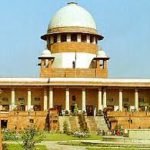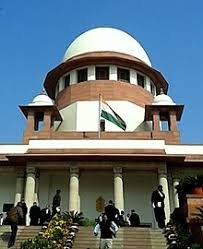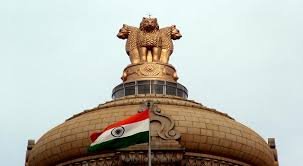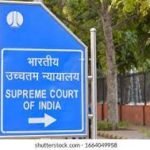This case originated from a long-standing enmity between parties in Haridwar. On December 9, 1992, Virendra Singh was killed, and his brother Tara Chand (P.W.1) and son Khem Singh (P.W.3) were injured when they were attacked by accused Anil @ Neelu (A4), Pramod (A3), and Ashok (A2), along with others, using guns, sharp weapons, and bricks. The Sessions Court convicted Anil, Pramod, and Ashok for various offenses, including murder (Section 302 IPC) and attempted murder (Section 307 IPC), sentencing them to rigorous imprisonment and fines.
However, the High Court of Uttarakhand at Nainital, through a common judgment dated September 12, 2012, acquitted all the criminal appeals filed by the respondents-accused. Aggrieved by this acquittal, the original injured appellant, Khem Singh, filed Special Leave Petitions (SLPs) before the Supreme Court, which were subsequently converted into Criminal Appeals. During the pendency of these appeals, Khem Singh passed away, and his son, Raj Kumar, sought to be substituted as the appellant to continue prosecuting the appeals.
Law Involved: The primary legal provisions and principles debated in this case revolved around:
Code of Criminal Procedure (CrPC):
Section 372 CrPC (Proviso): This crucial amendment, effective December 31, 2009, grants a “victim” the right to prefer an appeal against any order passed by a Court acquitting the accused, convicting for a lesser offense, or imposing inadequate compensation.
Section 2(wa) CrPC: Defines “victim” as a person who has suffered any loss or injury and explicitly states that the expression “victim” includes his or her “guardian or legal heir”.
Section 394(2) CrPC: Deals with the abatement of appeals on the death of the appellant, stating that “every other appeal… shall finally abate on the death of the appellant”.
Section 378 CrPC: Pertains to appeals in cases of acquittal, usually filed by the State or a complainant.
Constitutional Principles: The Court highlighted the fundamental right of a victim to prefer an appeal under Articles 14 and 21 of the Constitution.
Judicial Precedents: The Court extensively referred to prior rulings, particularly Mallikarjun Kodagali vs. State of Karnataka (2019) and PSR Sadhanantham vs. Arunachalam (1980), which underscored the expanded rights of victims and the permissibility of legal heirs pursuing appeals.
Reasoning:
The Supreme Court’s reasoning centered on the interpretation of “victim” and the application of the proviso to Section 372 CrPC in light of the appellant’s death:
Victim’s Right to Appeal is Distinct: The Court emphasized that the right to appeal granted to a victim under the proviso to Section 372 CrPC is an independent statutory right, distinct from appeals filed by the State or a complainant. This right was introduced to ensure victim-oriented justice.
Given the definition of “victim” in Section 2(wa) CrPC explicitly including “guardian or legal heir,” the Court reasoned that the legislative intent was to ensure that the victim’s right to appeal does not terminate upon the victim’s death if a legal heir wishes to pursue it. This goes beyond merely filing the appeal and includes prosecuting it.
Section 394 CrPC (Abatement) Not Absolute: While Section 394(2) CrPC generally provides for abatement on an appellant’s death, the Court noted that the proviso to Section 372 CrPC, introduced later and with a specific purpose, implicitly creates an exception for victim appeals. To allow abatement in such a scenario would defeat the very purpose of enhancing victim’s rights.
Distinction from Complainant’s Appeal (Section 378 CrPC): The Court clarified that while a complainant’s appeal under Section 378 CrPC might abate on death if a “near relative” is not substituted, the victim’s right under Section 372 CrPC is broader, allowing any legal heir to step in, given the specific definition of “victim”.
High Court’s Error: The Supreme Court found that the High Court’s judgment of acquittal was “cryptic and de hors any reasoning”. It failed to adequately apply its appellate jurisdiction, without proper evaluation of evidence, including medical evidence and witness statements, and without providing reasons for reversing the Sessions Court’s conviction. The High Court’s failure to engage with the merits of the evidence was a significant flaw.
Holding: The Supreme Court allowed the appeals and delivered the following directives:
Substitution Allowed: The application for substitution of the deceased appellant, Khem Singh, by his son, Raj Kumar, as the legal representative to prosecute the appeals, was permitted.
High Court Acquittal Set Aside: The High Court’s common judgment dated September 12, 2012, which acquitted the accused Nos. 4, 3, and 2, was set aside.
Remand to High Court: The matters were remanded back to the High Court of Uttarakhand at Nainital for a rehearing of the appeals.
Opportunity for All Parties: The High Court was directed to provide an opportunity to the appellant’s son (Raj Kumar) to make his submissions, alongside the State, during the rehearing.
Bail Continued: The accused Nos. 4, 3, and 2 were allowed to remain on bail, subject to furnishing fresh bonds of Rs. 15,000/- each with two like sureties.
Expeditious Disposal: The High Court was requested to dispose of the appeals expeditiously.
Khem Singh (D) Through LRs v. State of Uttaranchal (Now State of Uttarakhand) & Another Etc.
Supreme Court: 2025 INSC 1024 (DoJ 31-07-2025)








